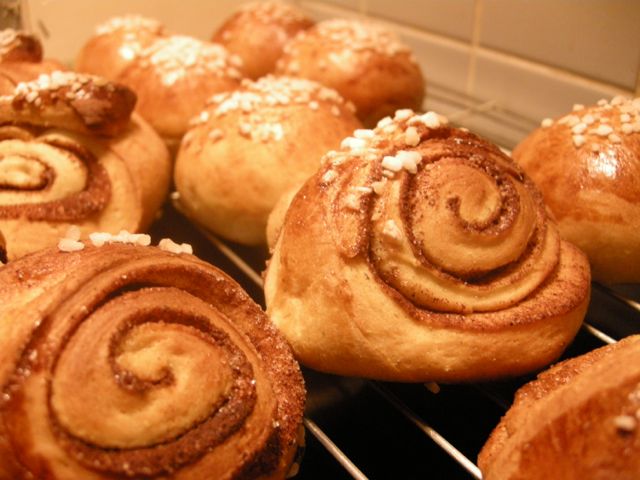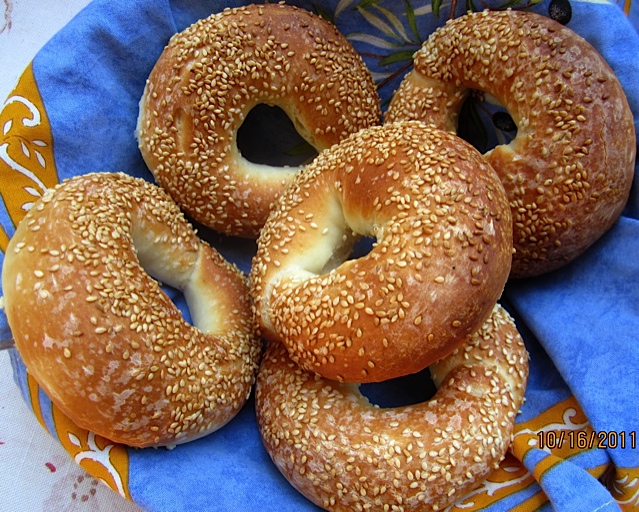
Finnish Pulla

My grandfather often tells the story of how during the war, when Helsinki was being bombed, his mother had to leave the pulla dough as the family fled to the nearby bomb shelter. After many hours, when they came back home, there was a surprise waiting for them: pulla dough all over the place -- apparently it had raised rather well!
Pulla, or Nisu as it's known in the United States (in old Finnish, nisu was the word for wheat, nowadays we call it vehnä) is the most common sweet bread in Finland and very popular with coffee -- so popular that it's also known as "kahvileipä", coffee bread.
In this recipe, which I wrote about a year ago, I have tried to combine some of the things I have learned about bread with the best of Finnish pulla.

Most pulla recipes tell you to start from the milk and then slowly add flour until the dough feels right. Because of this, the recipes are not that exact. I go the opposite way and start from flour. I also use less yeast and allow the dough to rest a bit longer. Other than that, this is very traditional pulla.
--
- 500 g full milk
- 8 g cardamom
- 1 egg (shelled weight about 60 g)
- 150 g sugar
- 10 g salt
- 800 g all-purpose flour
- 11 g instant yeast
- 180 g butter
- For cinnamon rolls, you will also need additional cinnamon and sugar as well as a little melted butter. I didn't measure these, but I hope you can get the amounts by looking at the photos below...
Instructions:
- Mix all dry ingredients together.
- Heat the milk to 42 degrees celcius to wake up the instant yeast and pour over the dry ingredients. Add the egg.
- Mix the dough. I worked the dough for about 10 minutes by hand, using the technique taught by Richard Bertinet.
- Add the butter, at room temperature, and continue working the dough until everything is smooth and nice.
- Let the dough rest until it's almost doubled in size. I did a stretch and fold sequence after 45 minutes of rest and then let the dough rest for a total of 1.5 hours, or maybe a little more.
- To make buns, shape the dough into small balls and let them rest for about 45 minutes before baking. Just before putting them in the oven, coat with egg and some pearl sugar. Bake for 10-12 minutes in 225 degrees Celcius.
- To make cinnamon rolls, use a rolling pin to form the dough into a rectangle with roughly the shape of a wide-screen television screen and thickness of about 5 millimeters or so. Brush with melted butter and sprinkle with cinnamon and sugar.
- Starting from the further wide end, roll towards yourself until you have a nice, tight roll.
- Using a sharp knife, cut the left side of the roll so that you have a clean corner at about a 45 degree angle. I like to eat the dough that was cut away, and so do my kids.
- Continue from there, cutting to the opposite direction at the same angle, until you reach the end of the roll and can eat some dough again. You should now have a bunch of nice triangles.
- Move your triangles on a baking sheet, the tip of the triangle pointing up. Gently press the top down with one finger and leave to rest for 45 minutes or so.
- Bake the same way as the buns.




Fresh pulla is best enjoyed with a glass of cold milk.


And finally, here's my four-year-old's work of art. It has a lot of added sugar and butter!





















































